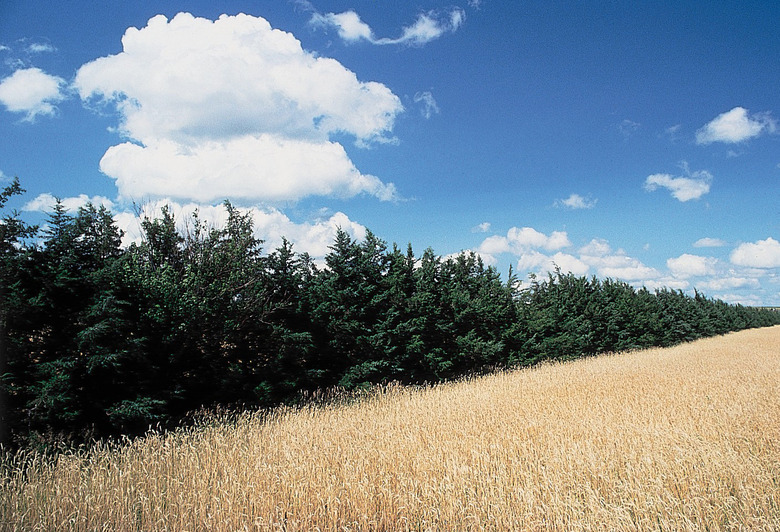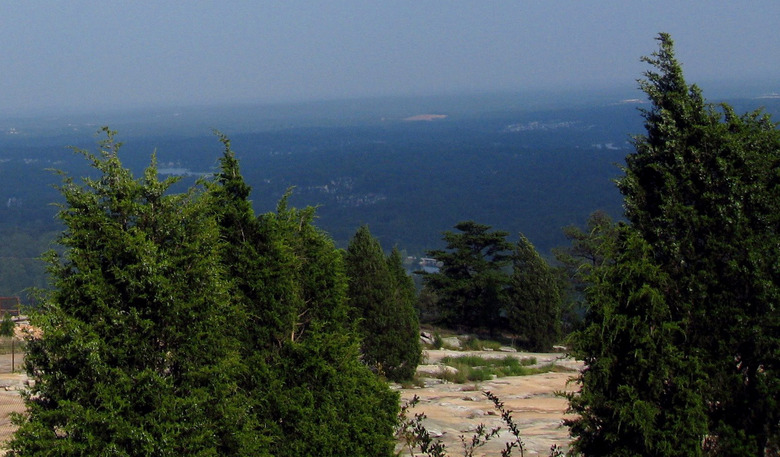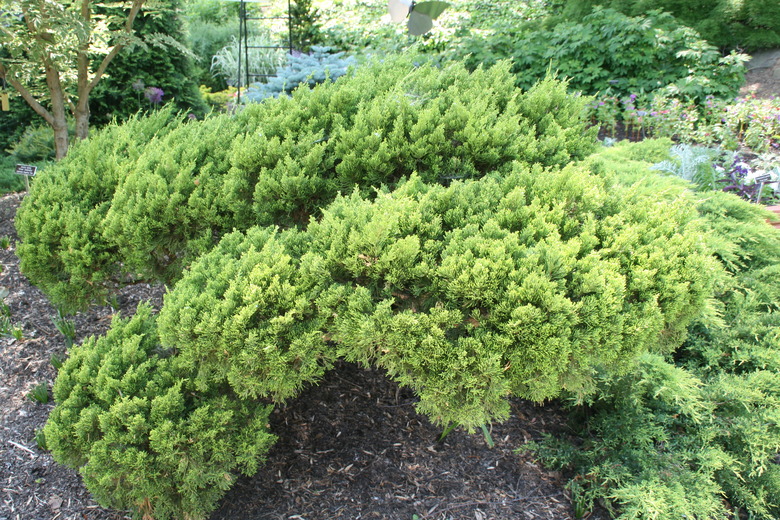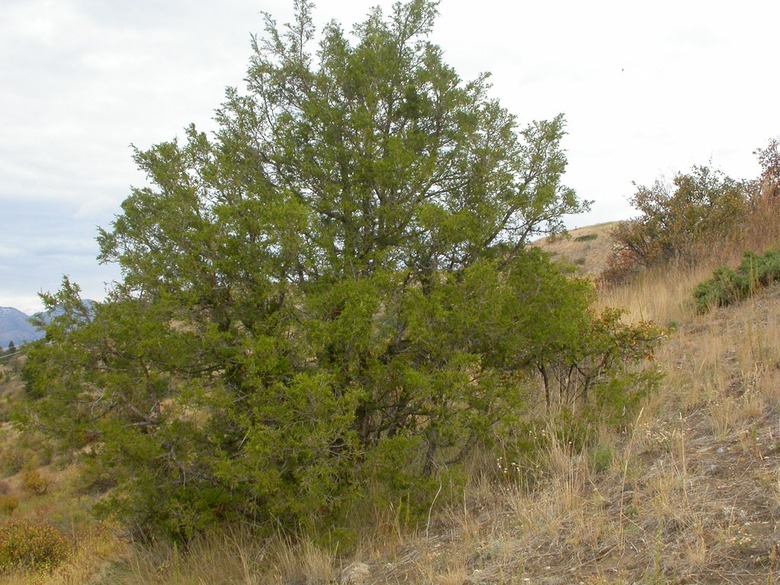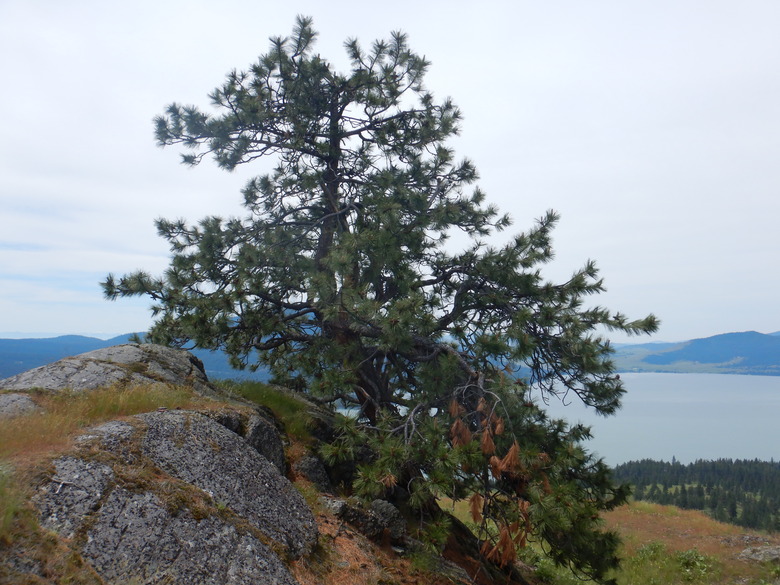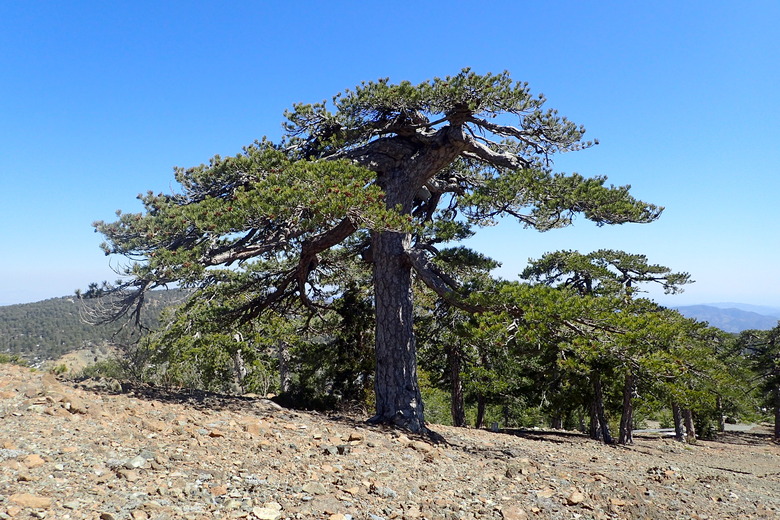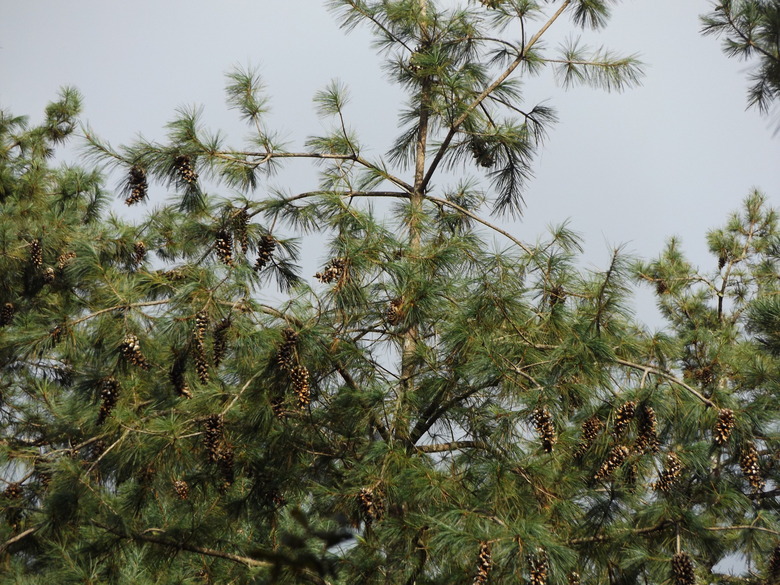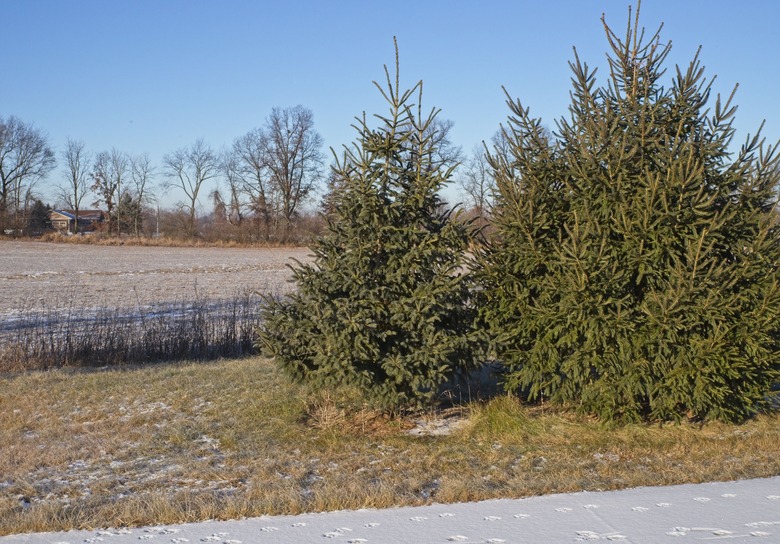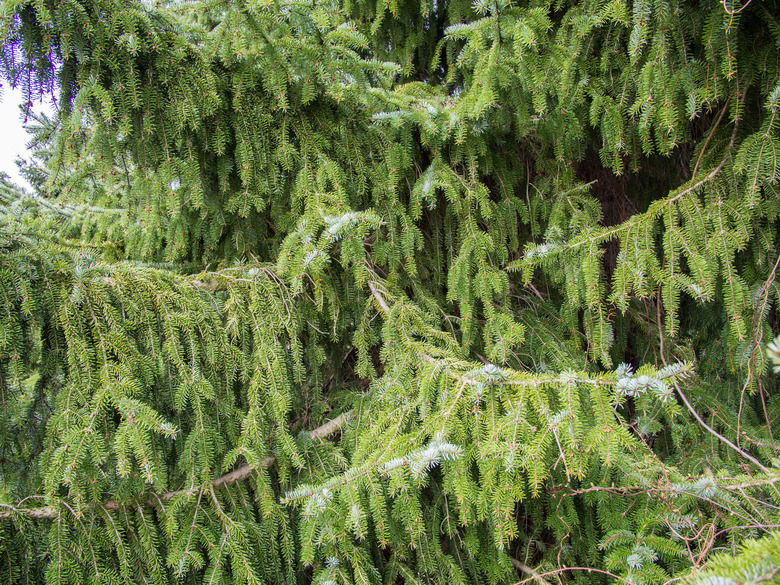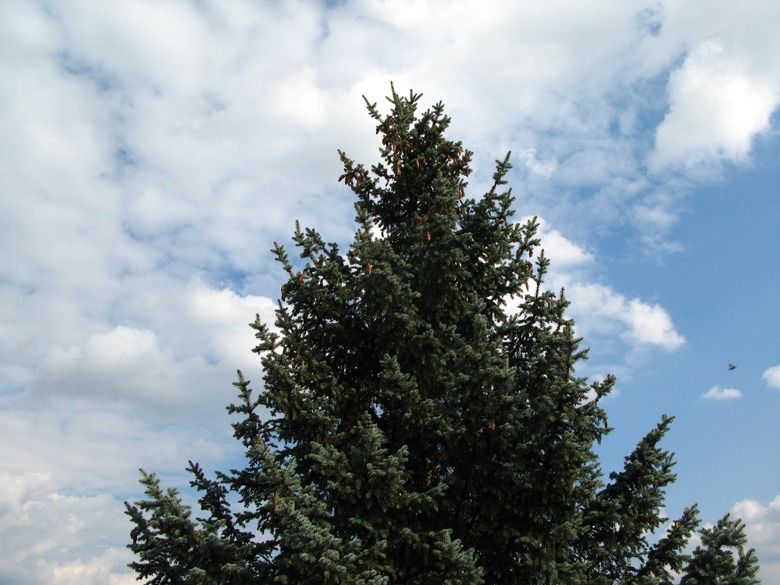Evergreen Trees In Kansas
Evergreen conifer trees have many uses in the landscape, including serving as windbreaks and screens. There are a handful of evergreen trees that grow well in Kansas. That is because there is only one evergreen tree native to the state, and therefore, it is the only one adapted to its climate and fluctuations in soil moisture.
Juniper, pine and spruce are among the evergreen trees that can be grown in Kansas with proper care and culture.
Juniper Trees in Kansas
Notably, juniper trees are the only evergreens that can be reliably grown in Kansas City. Let's look at some common juniper species found in Kansas.
Eastern Red Cedar
The eastern red cedar, or eastern redcedar (Juniperus virginiana, zones 2 to 9), is the only native evergreen in Kansas. It is not a true cedar but rather a juniper species. It has a height between 30 and 35 feet. There are many columnar cultivars from which to choose.
Chinese Juniper
Native to Asia, the Chinese juniper (Juniperus chinensis, zones 4 to 9), which has a height between 40 and 50 feet in the wild, can be grown throughout the state of Kansas. This species has the advantage of being resistant to many diseases.
There are several Chinese juniper cultivars that are popular in Kansas, including Spartan, which has a narrow, pyramidal form, and Robusta Green, which has an irregular habit and produces a large crop of fruit in the fall.
Rocky Mountain Juniper
The Rocky Mountain juniper (Juniperus scopulorum, zones 3 to 7) grows best in the western part of Kansas, where it has a better chance of surviving diseases such as cedar apple rust and infestations by pests known as bagworms. The Wichita Blue juniper is prized for its blue-green foliage and is associated with the city of Wichita in southwestern Kansas.
Pine Trees in Kansas
While no pine tree is native to Kansas, several species can be grown throughout the state. However, because of their susceptibility to various diseases, they are not often a gardener's first choice. Let's look at some prominent examples.
Ponderosa Pine
The Ponderosa pine (Pinus ponderosa, zones 3 to 7) is the most common pine in western North America. It is a massive tree, with a height in cultivation of up to 125 feet. It does not handle shade well and must be grown in full sun.
Austrian Pine
The Austrian pine (Pinus nigra, zones 4 to 7) is native to central and southern Europe. It is a large tree with a height of up to 50 feet. However, cultivating this species can be difficult due to its susceptibility to a disease known as Diplodia tip blight, which causes the needles to turn brown and branches to die back.
Southwestern White Pine
In Kansas, the southwestern white pine (Pinus strobiformis, zones 5 to 9) is preferred over other species of pine due to its greater tolerance for environmental stress. These are fast-growing trees in Kansas with a typical height of about 60 feet.
Spruce Trees in Kansas
Several species of spruce trees can survive in Kansas. Here are some of the top options.
Black Hills Spruce
The Black Hills spruce (Picea glauca 'Densata,' zones 3 to 6) is a variety of spruce tree native to the Black Hills of South Dakota. It is suitable for growing in the central and eastern regions of Kansas and is considered one of the best spruce species for the state. The Black Hills spruce has a slow growth rate and a height of about 30 feet.
Serbian Spruce
Native to Serbia as its name suggests, the Serbian spruce (Picea omorika, zones 4 to 7) grows in a narrow, pyramidal shape. It grows best in full sun and handles heat and humidity better than other spruce species.
While full-size trees have a height of about 40 feet, there are also dwarf Serbian spruce cultivars from which to choose. This evergreen is less prone to diseases than other evergreens in Kansas.
Colorado Spruce
With proper care, the Colorado spruce (Picea pungens, zones 2 to 7), or blue spruce, can survive in many regions of Kansas. It is valued for its attractive blue foliage. It can grow up to 30 feet tall, but there are dwarf cultivars available.
Evergreen Tree Care in Kansas
Because most evergreens grown in Kansas are not native to the state, they can suffer from environmental stressors that make them vulnerable to diseases and pests. It is important to provide evergreens in Kansas with good air circulation, protection from winds and well-draining soil for them to have a chance at survival.
An important way to keep evergreen trees healthy in Kansas is to provide adequate water during warm spells, especially in the winter months, according to K-State Research and Extension. It is also important to keep evergreen trees well irrigated during periods of drought in the summer.
Mulch can help keep the soil moist and prevent moisture fluctuations that are detrimental to many conifers.
References
- K-State Research and Extension: Conifer Trees for Kansas
- K-State Research and Extension: Growing Evergreens in Kansas City
- Kansas Forest Service: Eastern Redcedar
- Missouri Botanical Garden: Juniperus chinensis
- Missouri Botanical Garden: Juniperus scopulorum 'Wichita Blue'
- Missouri Botanical Garden: Pinus nigra
- Missouri Botanical Garden: Picea omorika
- Missouri Botanical Garden: Pinus ponderosa
